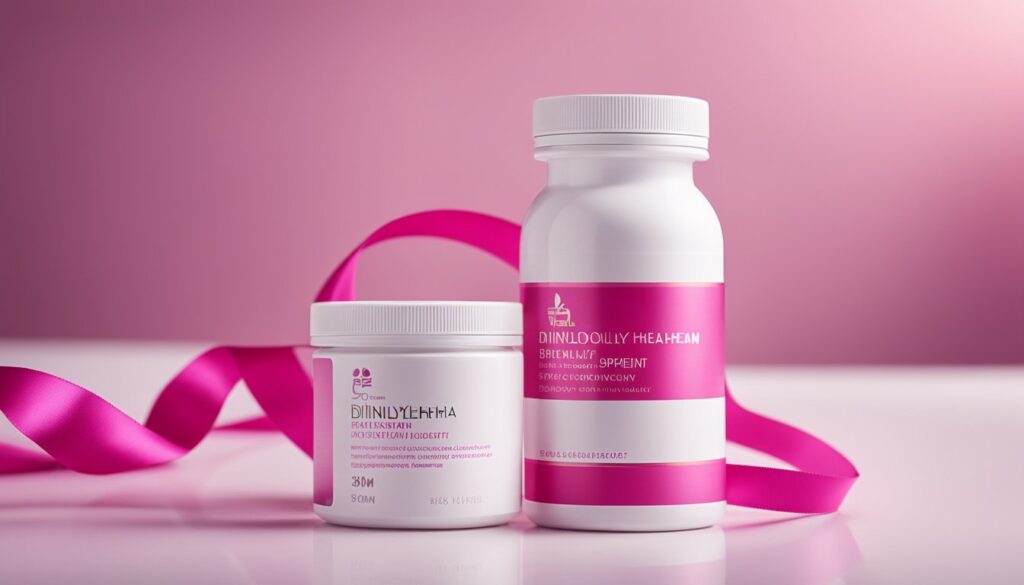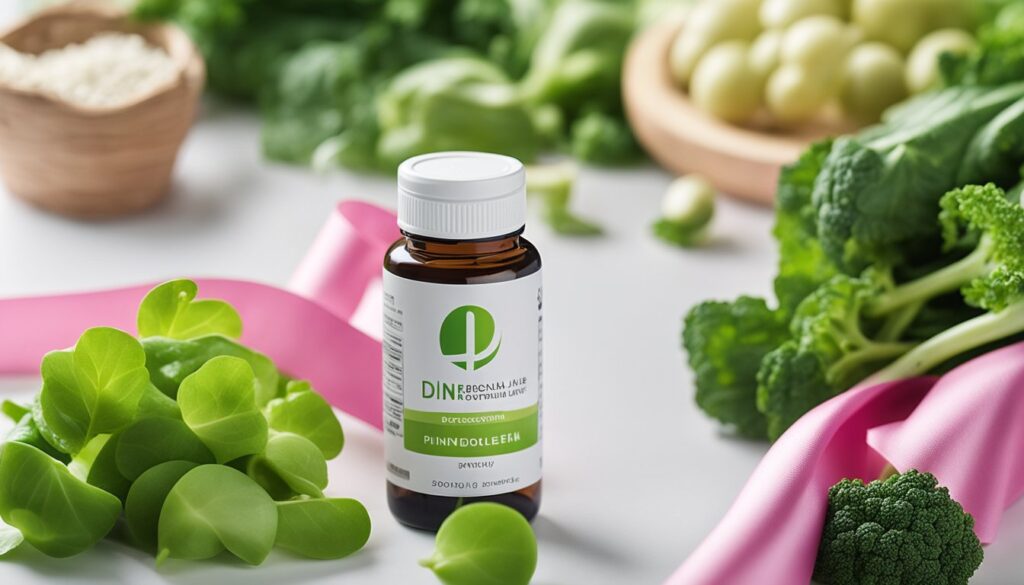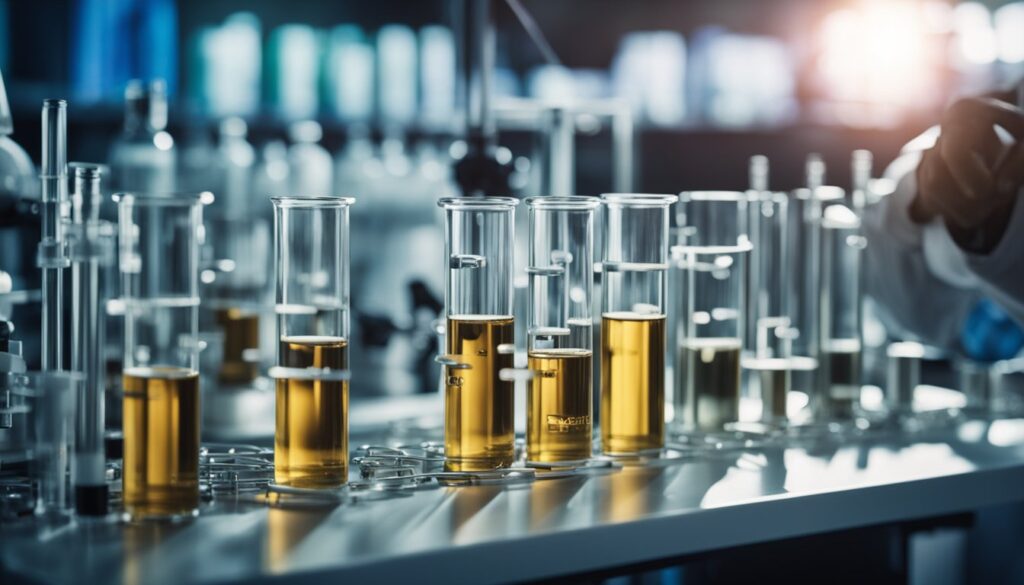Diindolylmethane, commonly known as DIM, is a natural compound that may play a crucial role in maintaining breast health. Found in cruciferous vegetables like broccoli, cabbage, and cauliflower, DIM is gaining recognition for its potential to support hormonal balance and cellular health. When you consume these vegetables, your body works to break down their nutrients, producing DIM during digestion.

As a supplement, DIM is available in various forms and has been linked to a multitude of health benefits, particularly concerning estrogen metabolism. Estrogen, a hormone with significant influence on breast tissue, can be metabolized in different pathways that may affect breast health positively or negatively. Studies suggest that DIM supplements can help promote a more favorable pathway for estrogen metabolism, which is crucial for both women and men concerned about breast health.
By supporting the body’s natural ability to balance hormones and detoxify potentially harmful substances, taking DIM supplements might be a proactive step in nurturing breast health. While it is not a cure or a guaranteed preventive measure for breast conditions, incorporating DIM as part of a healthy lifestyle could offer additional support for your health goals. Remember, as with any supplement, it’s important to discuss with a healthcare professional before adding it to your routine.
Understanding Diindolylmethane

In this section, you will gain insights into Diindolylmethane (DIM), a promising compound for breast health, derived from the digestion of certain vegetables, and its role in hormonal balance and cellular health.
Chemical Nature and Sources
Diindolylmethane, or DIM, is a compound formed naturally in your body after consuming cruciferous vegetables like broccoli, cauliflower, and Brussels sprouts. It originates from another substance known as Indole-3-Carbinol, which is found in high concentrations within these types of vegetables. Simply put, when you eat cruciferous veggies, your stomach acids work to convert Indole-3-Carbinol into DIM.
Role in Estrogen Metabolism
Your body’s estrogen metabolism is critical for hormonal balance, and DIM plays a unique role in this process. It helps in the regulation of estrogen levels by promoting the metabolism of the hormone into beneficial or less potent forms. This action can be particularly important for your breast health, as some forms of estrogen can promote growths in the breast tissue.
Impact on Cellular Processes
Impact on cellular processes goes beyond just estrogen management. As a compound, DIM has been shown to have chemopreventive properties. This means it may aid in preventing the changes in cells that could lead to abnormal growth patterns. Additionally, DIM impacts metabolism, contributing to a more favorable internal environment for maintaining cellular health. This has particularly been observed in breast tissue studies, indicating a potential role for DIM in a comprehensive approach to supporting breast health.
By understanding the nature and effects of Diindolylmethane, you are better equipped to make informed decisions about your dietary choices and supplement intake for optimal breast health.
Diindolylmethane and Breast Cancer

Diindolylmethane (DIM) is a compound studied for its potential role in breast cancer prevention and treatment. Understanding how DIM works and the research behind its efficacy can help you make informed decisions about its use.
Mechanisms of Action
DIM exerts multiple effects on cancer cells. It promotes apoptosis, which is the programmed cell death deficient in cancer cells and has antiproliferative properties, meaning it can impede the growth of new cancer cells. Its anti-inflammatory activities contribute to its potential for cancer prevention. Additionally, DIM enhances the effects of tamoxifen, a commonly used drug in breast cancer treatment.
Research on DIM and Breast Cancer
Recent studies have provided insights into how DIM supplementation could influence breast cancer outcomes. For instance, clinical trials have suggested that DIM may lower breast density, a risk factor for breast cancer. It has also been linked to the regulation of estrogen metabolism, which is crucial since some breast cancers are estrogen-driven. Research has indicated that DIM may affect levels of survivin, a protein that helps cancer cells evade apoptosis.
DIM Supplements and Treatment
When considering DIM supplements for breast health, it’s essential to look at the evidence. While some studies indicate a possible benefit, DIM should not replace conventional treatments like tamoxifen. Instead, it may be considered as a complementary approach, potentially enhancing the effectiveness of established therapies. Always consult a healthcare professional for guidance tailored to your specific health needs.
Safety and Efficacy of DIM Supplements
When considering DIM supplements for breast health, it’s imperative to understand the balance between potential benefits and risks. Your awareness of the recommended dosing and potential interactions can further guide safe usage.
Benefits and Potential Risk Factors
DIM, found in cruciferous vegetables, is investigated for its role in supporting breast health. It may help modulate estrogen metabolism, which is vital for hormonal balance. However, potential risk factors include side effects like nausea and headaches. Notably, individuals with hormone-sensitive conditions must approach DIM with caution due to its estrogenic activity.
Recommended Dosing and Interactions
The typical diet provides 2-24 mg of diindolylmethane daily, with supplements available in higher doses. Studies suggest a dose of up to 150 mg of DIM may be taken safely, though individual reactions vary. Your healthcare provider should be consulted, especially if you are taking medications that could interact with DIM, such as those metabolized by the liver’s cytochrome P450 enzymes.
Clinical Studies and Pharmacokinetics
Limited clinical studies have explored DIM’s efficacy, but some research indicates its anticancer effects. Regarding pharmacokinetics, DIM is absorbed and metabolized by the liver, emphasizing the importance of understanding how it might affect those with liver conditions. While more investigation into its long-term safety is ongoing, existing studies have not provided strong evidence of significant side effects. DIM’s use during pregnancy remains inadequately studied, thus warranting a cautious approach.
Your informed decision-making, guided by scientific evidence and discussions with healthcare professionals, can ensure you benefit from DIM supplements while minimizing risks.
Conclusion
In your journey to support breast health, you may consider the role of Diindolylmethane (DIM), a compound derived from cruciferous vegetables. Research suggests that daily DIM supplementation could lead to a significant decline in fibroglandular (FGT) tissue on MRI in BRCA mutation carriers, hinting at its potential for chemoprevention.
Evidence from clinical trials indicates that DIM may promote favorable changes in estrogen metabolism and levels of sex hormone-binding globulin (SHBG), particularly in patients taking tamoxifen for breast cancer. However, it’s important to be aware that DIM supplementation might reduce the levels of tamoxifen metabolites, which calls for careful consideration regarding its concomitant use with this medication.
As part of a breast cancer prevention strategy, DIM’s effect on estrogen-related hormones and metabolites demonstrates promise. Nonetheless, the long-term safety and clinically relevant activity demand further research.
Before integrating DIM supplements into your regimen, consult healthcare professionals, particularly due to possible interactions with treatments such as tamoxifen. It’s crucial to make informed decisions based on up-to-date evidence to safely support your breast health.
Frequently Asked Questions
In this section, we’ll address some common inquiries about Diindolylmethane (DIM) supplements and their effects on breast health.
What are the potential side effects of taking DIM supplements?
While DIM is found in cruciferous vegetables and is generally considered safe, potential side effects of supplemental forms may include gastrointestinal discomfort and changes in liver enzyme levels. It’s important to consult with a healthcare provider before starting any new supplement.
How might DIM supplements influence estrogen levels in the body?
DIM supplements may alter estrogen metabolism and favor the production of less potent forms of estrogen, which can be beneficial in maintaining hormonal balance and supporting breast health. They have been suggested to potentially prevent carcinogenesis and tumor development in some cases.
What is the recommended dosage of DIM for addressing estrogen dominance?
The recommended dosage can vary, but some studies suggest that a daily amount of 100 to 200 milligrams of DIM may be beneficial for addressing estrogen dominance. It’s crucial to follow the advice of a healthcare provider who understands your specific health needs.
How does DIM intake relate to the risk of breast cancer recurrence?
Research has indicated DIM may have a positive effect on urinary hormone metabolites in postmenopausal women with a history of early-stage breast cancer. However, more research is needed to fully understand the impact of DIM on the risk of breast cancer recurrence.
What is the optimal time of day for taking DIM supplements?
There is no universally optimal time of day; it depends on individual preference and tolerance. Some choose to take DIM with meals to minimize potential stomach upset, while others opt for a time that aligns with their daily supplement routine for consistency.